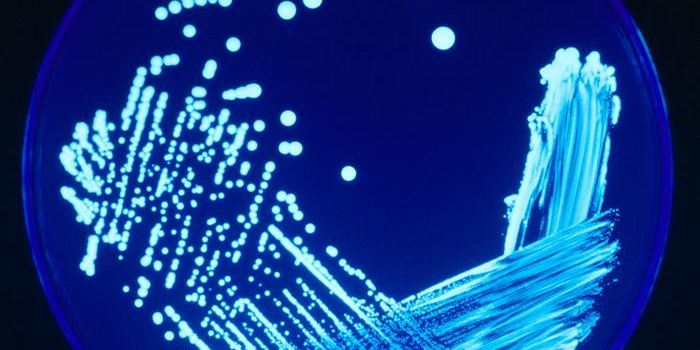Researchers Create an Antibiotic That Spares the Beneficial Bugs in the Gut
For many years, the efficacy of many front-line antibiotics has been declining because of the spread of antibiotic resistance among bacterial pathogens. Experts have long called for the development of novel antibiotics, which is no easy task. But scientists have begun to answer the call. Recent research has identified several compounds that show incredible potential as novel antibiotics, and while more testing and development is needed, it shows that we can create new ways to destroy resistant pathogens, which already contribute to the deaths of millions of people every year around the world.
Reporting in Nature, scientists have now described a molecule called lolamicin that is able to either reduce or totally eliminate antibiotic-resistant bacterial infections that caused sepsis or pneumonia in mouse models; it also worked in cell culture models against over 130 different types of multidrug-resistant strains of bacteria that have caused infections in hospitalized patients. The drug could prevent secondary infections caused by dangerous Clostridium difficile germs, and incredibly, it was able to battle these infections without harming the gut microbiome.
The gut microbiome is a massive community of microorganisms that is intimately linked to human health and well-being. Many beneficial microbes are part of the gut microbiome, and common antibiotics often disrupt this important microbial community.
"They're killing our good bacteria as they treat the infection. We wanted to start thinking about the next generation of antibiotics that could be developed to kill the pathogenic bacteria and not the beneficial ones," said corresponding study author Paul Hergenrother, a chemistry professor at the University of Illinois Urbana-Champaign.
Bacteria are often characterized according to the composition of their cell wall, making them either Gram-positive or Gram-negative. Since Gram-negative bacteria have a second layer, they are often tougher to eliminate, noted first study author Kristen Muñoz, PhD.
Drugs that destroy nasty Gram-negative bacteria can also kill potentially helpful Gram-negative bacteria, such as colistin. This drug can actually increase the risk of complications associated with C. difficile infections and is also harmful to the liver and kidney. It is usually only used as a last resort, noted the researchers.
AstraZeneca created a class of drugs that inhibit a lipoprotein-transport process called the Lol system, which is found only in Gram-negative bacteria and differs genetically in harmful and helpful microbes.
The researchers determined that one of these drugs, lolamicin, was able to selectively target some types of Gram-negative germs like Escherichia coli and Klebsiella pneumoniae. The drug could eliminate as much as 90 percent of multidrug-resistant E. coli, K. pneumoniae and E. cloacae strains.
All mice with septicemia and 70 percent of mice with pneumonia were fully relieved of their infections after oral treatment with lolamicin. The drug could also accomplish these results without disrupting the mouse microbiome, which is considered to be a good model for the human microbiome. This was in sharp contrast to typical antibiotics amoxicillin and clindamycin, which dramatically reduced beneficial strains of microbes in the mouse models.
Extensive research will still be needed before lolamicin or similar compounds are brought to market, and scientists will have to ensure that they are effective and safe in humans. However, the work shows that scientists can identify novel drugs that could help reduce the mortality caused by drug-resistant infections.









